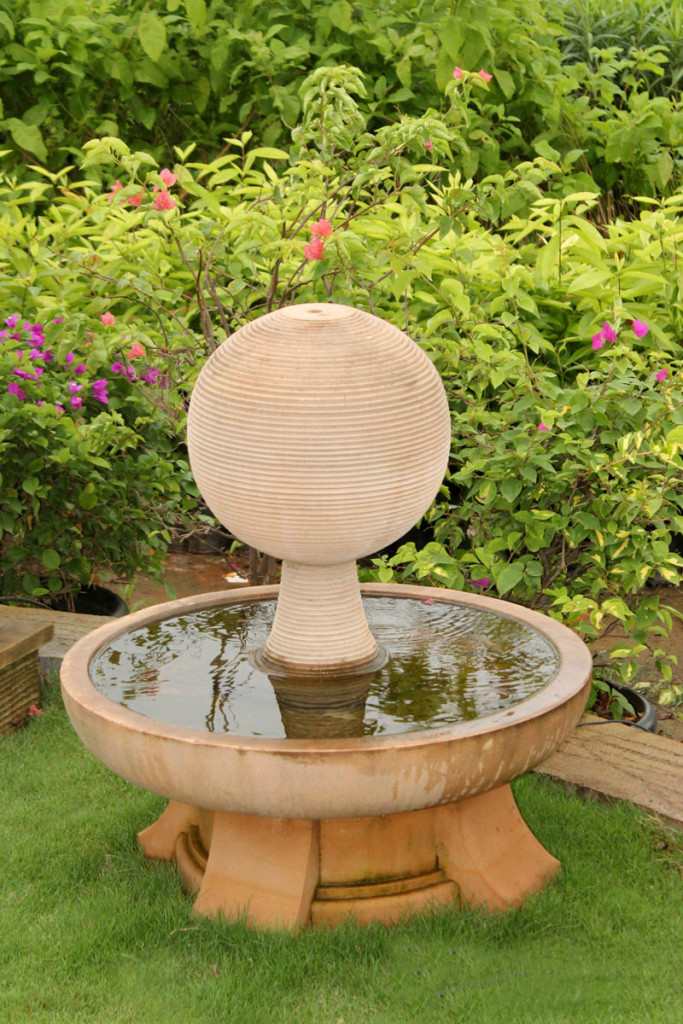Ponds, fountains and other water features can transform your backyard into a tranquil oasis. If you live near a highway or in a noisy area, water features can drown out ambient noise and replace it with a soothing, natural sound. Adding a water feature can also enhance existing landscaping, often at a marginal cost and with little required maintenance. Lastly, providing a water source in your yard can help local wildlife, including birds, butterflies and hummingbirds. There is one animal that you don’t want to attract when you add water to your landscape, however: mosquitoes.
Many gardeners are adding fountains, ponds, and other water features to their landscapes. Water gardens are beautiful and calming, but, if not managed properly, can add an unpleasant element to the landscape—mosquitoes. How can you help prevent mosquito infestations?
Mosquitoes can be managed using an integrated approach that relies mostly on prevention, using biological and chemical controls when necessary. The key strategy is to eliminate all potential breeding sites; even one ounce of standing water can support a population of larvae. What can be done, however, when an outdoor space contains a water element? Here are a few tips.
How to stop mosquitoes breeding in water features
Most species of mosquitoes lay their eggs in water. Larvae can thrive in even an ounce of standing water. With that in mind, if you do want to add a pond, waterfall or a fountain to your landscape, you’ll want to learn how to add a water feature without attracting mosquitoes. Thankfully, homeowners have several options.
GO DEEP—AND MAKE IT STEEP
Water will always attract mosquitoes, so your best approach is to eliminate potential breeding sites. By installing a water feature which is at least two feet deep, you will be creating suboptimal conditions for larvae, since they like shallow water. Steep walls or quick drop offs in water depth provide less-than-ideal conditions for mosquito larvae to hatch, so keep that in mind when selecting your design.
CIRCULATE YOUR WATER
Running water prevents mosquitoes from laying their eggs, because they can only survive in stagnant water. Inexpensive pond pumps are available from your local pond supply or home improvement center and plastic tubing only costs a few dollars. Besides stirring the water around, pumps also add oxygen, which fish need to survive. Depending on how much time and money you’d like to invest in the project, you can design a spectacular waterfall or stream as the centerpiece of your water feature.
ADD FISH
No pond is complete without fish. If you decide to add a pond to your landscape, you can enhance it and help with mosquito control at the same time by adding some inexpensive fish. A handful of fish can consume their weight in mosquito eggs in under a week, and a few dollars’ worth of fish food can last for months. Goldfish, minnows, koi and guppies all eat mosquito larvae, and some local governments even provide free mosquito fish to help prevent the spread of mosquitoes. If you decide to remove these fish from your water feature later on, make sure not to dump them into a natural body of water, as these species can become invasive and harm local species.
KEEP IT CLEAN
Although maintaining a pond or fountain is far less work than a pool, you will still want to keep the water surface clear of vegetation or debris, as this can provide mosquito larvae with food and protection from predators. You can purchase a pond or skimmer net and do this on a weekly or monthly basis, depending on how quickly debris accumulates.
TRY LARVICIDE
If you want to add a birdbath to your yard, you won’t want to take the measures above. Or perhaps you try what we have already mentioned and are still seeing wiggling larvae on the surface of the water in your pond or fountain. In those cases, you may want to try larvicide. Avoid general insecticides, as these products can also kill mosquito-eating predators such as dragonflies and backswimmers. Instead, choose products containing the type of bacteria called Bacillus thuringiensis israelensis (more commonly known as Bti).
Bti is an environmentally safe and effective larvicide used in a wide variety of consumer products. When shopping for larvicide, look for Bti on the list of ingredients, and this bacteria will take care of the rest. It will only target mosquitoes and black flies, leaving the rest of your water ecosystem intact.








